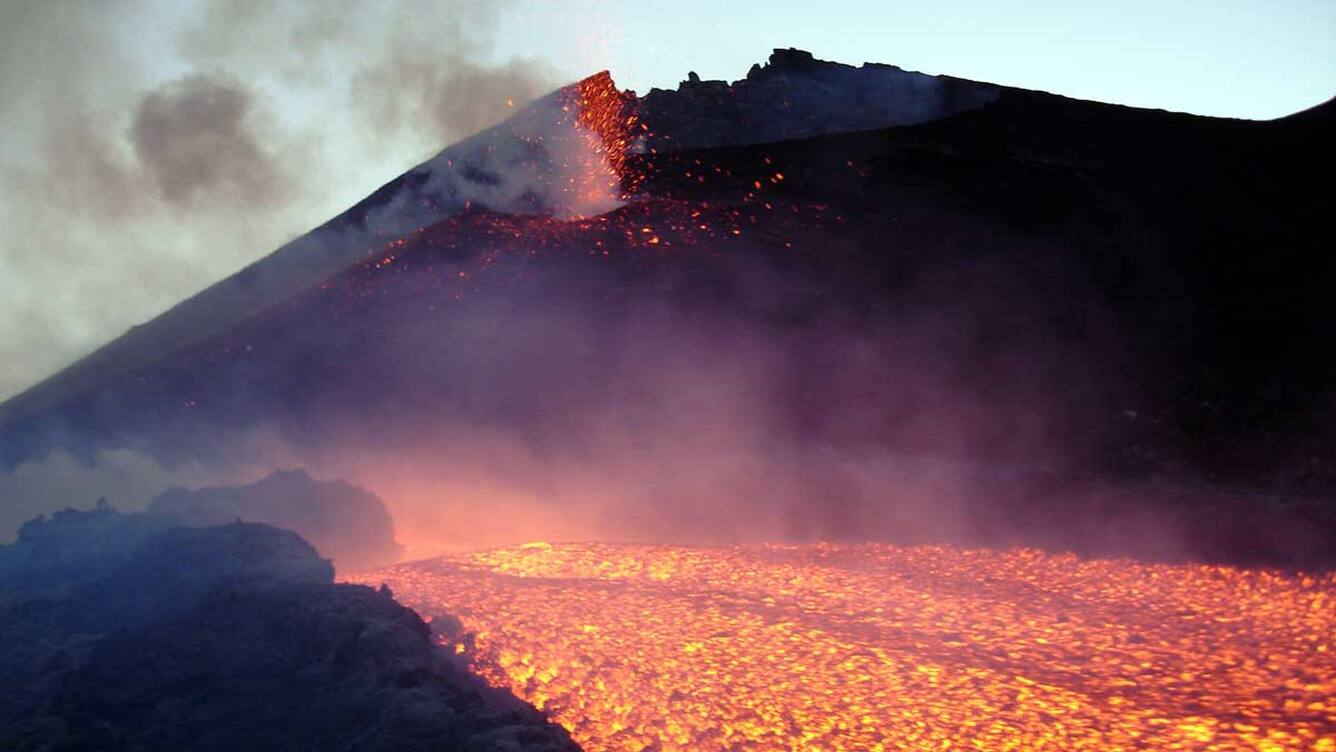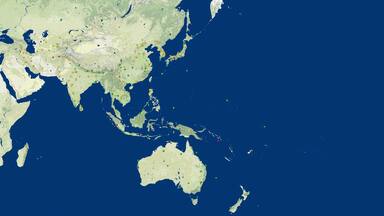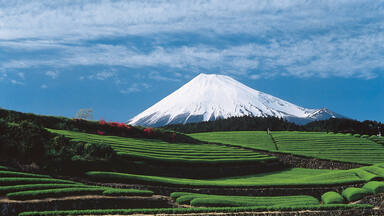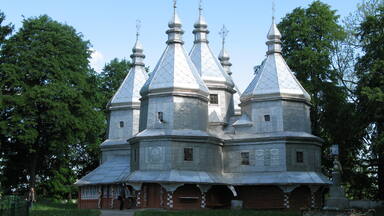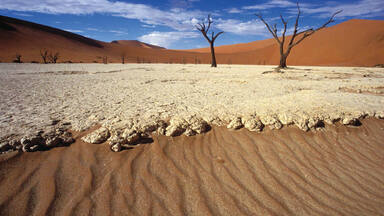Mount Etna and the Mountains of Pamir inscribed on World Heritage List alongside El Pinacate and Gran Desierto de Altar
The World Heritage Committee has inscribed natural sites from Tajikistan, Italy, and Mexico on the World Heritage List.
Tajikistan National Park (Mountains of the Pamirs) (Tajikistan)
Tajikistan National Park (Tajikistan) covers more than 2.5 million hectares in the east of the country, at the centre of the so-called “Pamir Knot”, a meeting point of the highest mountain ranges on the Eurasian continent. It consists of high plateaux in the east and, to the west, rugged peaks, some of them over 7,000 meters high, and features extreme seasonal variations of temperature. The longest valley glacier outside the Polar region is located among the 1,085 glaciers inventoried in the site, which also numbers 170 rivers and more than 400 lakes. Rich flora species of both the south-western and central Asian floristic regions grow in the Park which shelters nationally rare and threatened birds and mammals (Marco Polo Argali sheep, Snow Leopards and Siberian Ibex and more). Subject to frequent strong earthquakes, the Park is sparsely inhabited, and virtually unaffected by agriculture and permanent human settlements. It offers a unique opportunity for the study of plate tectonics and subduction phenomena.
The site is Tajikistan’s first natural World Heritage site.
Mount Etna (Italy)
Mount Etna (Italy) is an iconic site encompassing 19,237 uninhabited hectares on the highest part of Mount Etna, on the eastern coast of Sicily. Mount Etna is the highest Mediterranean island mountain and the most active stratovolcano in the world. The eruptive history of the volcano can be traced back 500,000 years and at least 2,700 years of this activity has been documented. The almost continuous eruptive activity of Mount Etna continues to influence volcanology, geophysics and other Earth science disciplines. The volcano also supports important terrestrial ecosystems including endemic flora and fauna and its activity makes it a natural laboratory for the study of ecological and biological processes. The diverse and accessible range of volcanic features such as summit craters, cinder cones, lava flows and the Valle de Bove depression have made the site a prime destination for research and education.
El Pinacate and Gran Desierto de Altar Biosphere Reserve (Mexico)
The 714,566 hectare site comprises two distinct parts: the dormant volcanic Pinacate Shield of black and red lava flows and desert pavements to the east, and, in the west, the Gran Altar Desert with its ever changing and varied sand dunes that can reach a height of 200 metres. This landscape of dramatic contrast notably features linear, star and dome dunes as well as several arid granite massifs, some as high as 650 metres. The dunes emerge like islands from the sea of sand and harbour distinct and highly diverse plant and wildlife communities, including endemic freshwater fish species and the endemic Sonoran Pronghorn, which is only to be found in northwestern Sonora and in southwestern Arizona (USA). Ten enormous, deep and almost perfectly circular craters, believed to have been formed by a combination of eruptions and collapses, also contribute to the dramatic beauty of the site whose exceptional combination of features are of great scientific interest. The site is also a UNESCO Biosphere Reserve.
A total of five natural sites have been inscribed during this session (Xinjiang Tianshan, China; and Namib Sand Sea, Namibia). Mount Kenya-Lewa Wildlife conservancy (Kenya), was inscribed as an extension added to Mount Kenya Natural Park / Natural Forest. The World Heritage Committee is pursuing its work with the nomination of cultural sites as well as mixed natural and cultural sites. The 37th session, taking place in Phnom Penh, will close in Angkor on 27 June.
Decisions (1)
The World Heritage Committee,
1. Having examined Documents WHC-13/37.COM/8B and WHC-13/37.COM/INF.8B2;
2. Inscribes Mount Etna, Italy, on the World Heritage List under criterion (viii) ;
3. Adopts the following Statement of Outstanding of Outstanding Universal Value:
Brief synthesis
Mount Etna World Heritage Site (19,237 ha) comprises the most strictly protected and scientifically important area of Mount Etna, and forms part of the Parco dell’Etna Regional Nature Park. Mount Etna is renowned for its exceptional level of volcanic activity, and the documentation of its activity over at least 2,700 years. Its notoriety, scientific importance, and cultural and educational value are of global significance.
Criterion (viii) : Mount Etna is one of the world’s most active and iconic volcanoes, and an outstanding example of ongoing geological processes and volcanic landforms. The stratovolcano is characterized by almost continuous eruptive activity from its summit craters and fairly frequent lava flow eruptions from craters and fissures on its flanks. This exceptional volcanic activity has been documented by humans for at least 2,700 years – making it one of the world's longest documented records of historical volcanism. The diverse and accessible assemblage of volcanic features such as summit craters, cinder cones, lava flows, lava caves and the Valle de Bove depression have made Mount Etna a prime destination for research and education. Today Mount Etna is one of the best-studied and monitored volcanoes in the world, and continues to influence volcanology, geophysics and other earth science disciplines. Mount Etna’s notoriety, scientific importance, and cultural and educational value are of global significance.
Integrity
The boundaries of the property are clearly defined and encompass the most outstanding geological features of Mount Etna. The property includes very little infrastructure: a few forest / mountain tracks, a number of basic mountain shelters along the main forest tracks, and over 50 small seismic monitoring stations and a scientific observatory.
A buffer zone of 26,220 ha surrounds the property, including parts of Mount Etna Regional Nature Park, and two tourism zones. These tourism zones include accommodation (hotels, huts), car parks, restaurants, cafes, a cableway, chair and drag lifts for ski tourism, information points, and ticket kiosks for guided drives, hikes and horse/donkey safaris.
Protection and management requirements
The Parco dell’Etna (Etna Park) was established as a Regional Nature Park by Decree of the President of the Sicilian Regional Authority in May 1987. The property includes part of this Park, comprising the zone defined as an integral reserve. In addition, nine Natura 2000 sites overlap the property to various degrees, providing additional protection for 77% of the area under European legislation.
The regulations provided within the Decree provide for adequate protection of the key values of the property. Since the completion of a land acquisition process in 2010, 97.4% of the property’s area is in public ownership (region or communities). In contrast, 56.6% of the buffer zone is privately owned.
The management of the property is coordinated by Ente Parco dell’ Etna, established as the managing authority of Etna Park by Decree of the President of the Sicilian Regional Authority in May 1987, working in close cooperation with the Regional Authority of State Forests and the Regional Corps of Forest Rangers (Corpo Forestale). Management is guided by a long-term management plan and Triennial Intervention Programmes.
The property has no permanent population, is free of roads, and its use restricted to research and recreation. Vehicle access to the limited network of forest and mountain tracks appears to be strictly controlled (e.g. through gates and fences) and is only permitted for park management purposes and authorized activities such as research and organized 4x4 drives on the main track from the tourism facilities in the buffer zone to the INGV observatory. Except for possible maintenance of the observatory, no construction projects are permitted or planned within the property. Public access to the top of Mount Etna may be officially prohibited for safety reasons, although this regulation has been difficult to enforce. Organized recreational activities such as mountain biking and horse / donkey riding require advance authorisation. Although they appear to be limited at present, they need to be well monitored and managed to avoid negative impacts such as erosion and disturbance of wildlife. No dogs are allowed in the property and illegal hunting appears to be under control. Low-intensity grazing is permitted and occurs in parts of the property in the summer season. Limited silvicultural interventions are implemented in the property to reduce the risk from forest fires and maintain access routes. Climate change has the potential to increase the risk of forest fires in the region and impact the species and communities on Mount Etna. Natural hazards resulting from the volcanic activity of the property will always pose a risk to certain features and facilities of the park and beyond. Strengthened park visitor facilities are needed, taking into account best practice and lessons learned at other comparable World Heritage properties.
4. Commends the local, regional and national government authorities, park staff, forest rangers, cooperating scientists and scientific institutions, and non-governmental organizations for their commitment and support to the nominated property;
5. Requests the State Party to coordinate regional and national authorities to maintain and strengthen their support to the property, to further increase the management capacity of the property;
6. Recommends the State Party to review and update the management plan, to:
a) Strengthen harmonization between the various management organizations and private sector partners in the use of the proposed property to ensure that the outstanding geological features are not adversely impacted by increasing tourism pressures.
b) Strengthen mechanisms to monitor visitor use that balance the protection of natural heritage values with enhanced visitor experience and safety.
c) Encourage improved research and monitoring of the values with the inclusion of technical staff (geologist, geomorphologist and volcanologist) as an integral part of the management team on the site.
d) Encourage the exchange of management experience and promotion of scientific and educational opportunities between Mount Etna and Isole Eolie (Aeolian Islands, Italy).
7. Also recommends the park, regional and national authorities work together with relevant funding and technical partners in order to enhance the visitor experience of the property. This should include improvements to the environmental education and ecotourism facilities in the property, and tourism facilities in the buffer zone and wider park area;
8. Encourages the State Party improve the integration of the property and its buffer zone into the wider landscape, to recognize and promote existing education, monitoring, research and training activities, and to improve the prospects for sustainable development of the region, including through possible adoption of experience from the UNESCO Man and Biosphere Programme;
9. Recalling Decision 31 COM 8B.12 adopted at its 31st session (Christchurch, 2007), reiterates that “there is increasingly limited potential for further inscriptions of volcanic sites on the World Heritage List”, and also requests IUCN to revisit and update its thematic study on “World Heritage Volcanoes”, with input from reviewers expert in volcanic sites, to clearly articulate a short and appropriately balanced list of the strongest remaining candidate volcanic sites with potential for inscription on the World Heritage List.
Read more about the decision